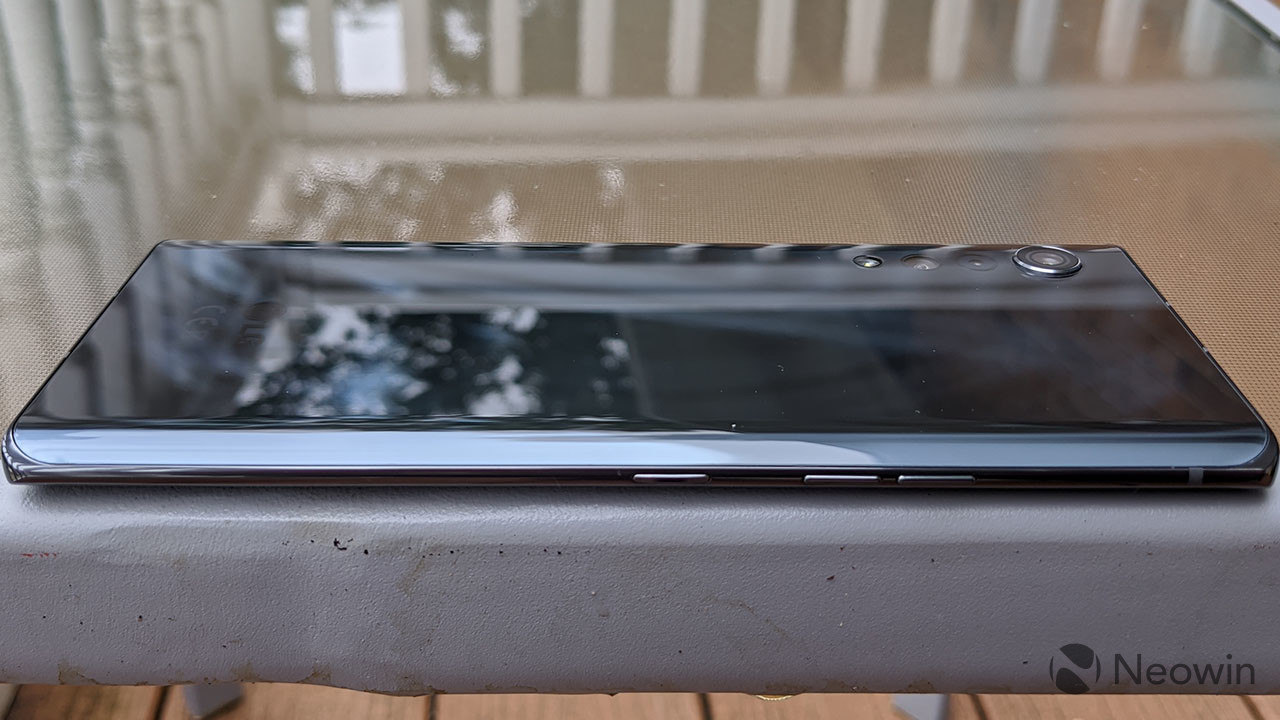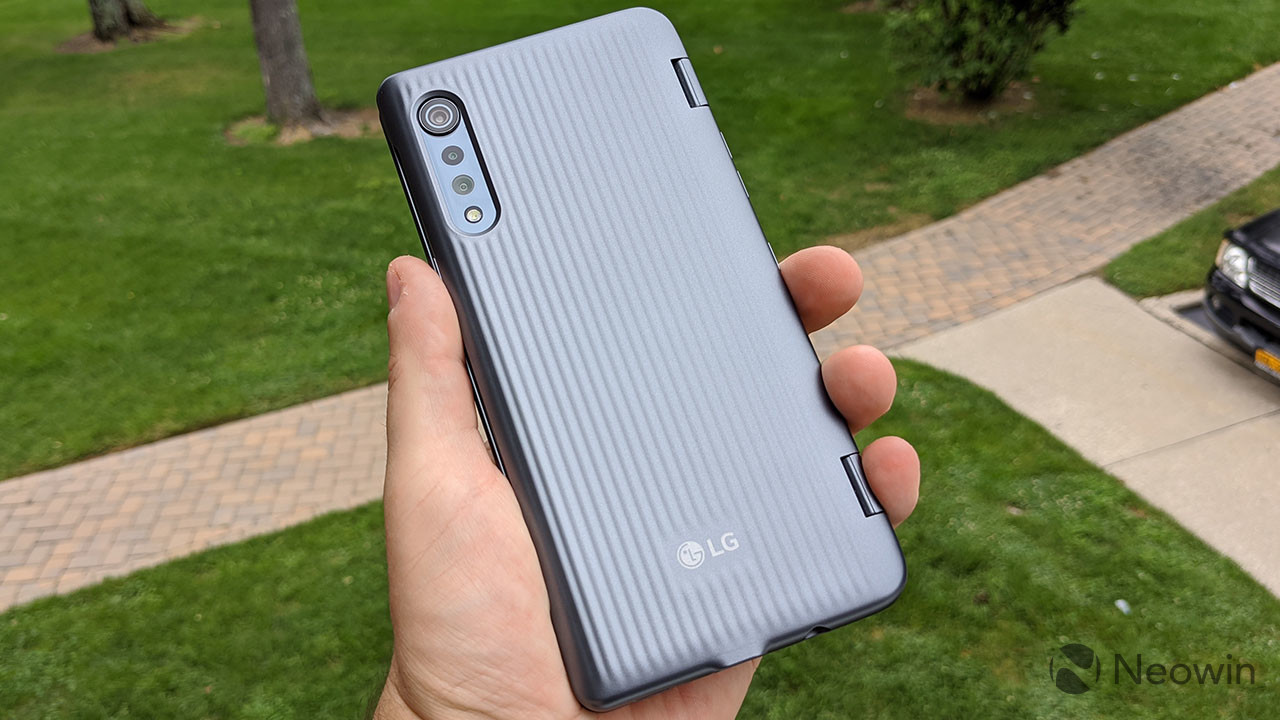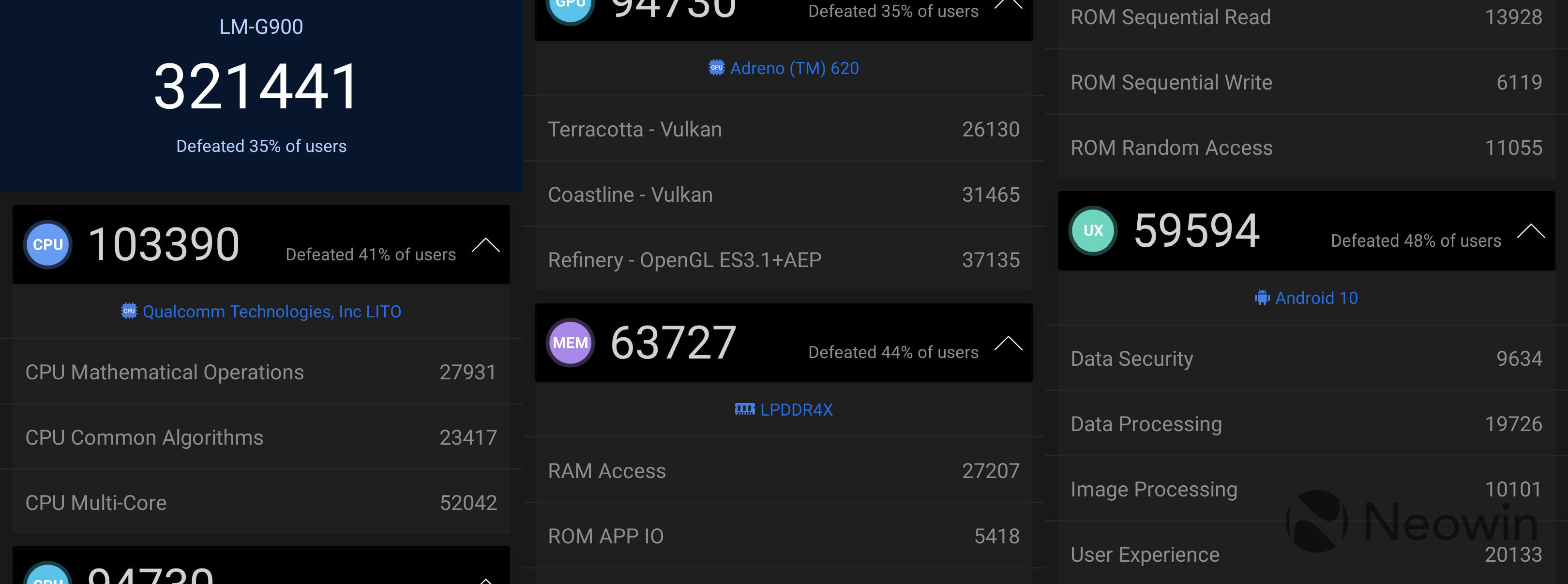LG's Velvet is a big departure from the company, and that's a good thing. Back in the days of the G7 and the V30 when it was introducing its ThinQ brand, it promised meaningful updates to its devices, rather than incremental, annual spec bumps. But then it seemed like we got year after year of spec bumps in handsets with uninspired designs. Don't get me wrong; the phones were fine, but they just left something to be desired.
Enter the LG Velvet. The firm is discontinuing both of its flagship lineups, which are the G- and V-series, and it's giving its devices actual names now. It also seems to be discontinuing the ThinQ brand.
The Velvet is an all-new design from LG, and while I've appreciated the blue and gold look of the V60, the Velvet is the first LG phone in a while that seems to actually have an inspired design. It comes in pretty colors, it has a unique camera design, and it comes in at just the right size and weight.
Specs
| CPU | Qualcomm Snapdragon 765G, single 2.4GHz, single 2.2GHz, hexa-core 1.8GHz Kryo 475 |
|---|---|
| GPU | Adreno 620 |
| Display | 6.8 inches, 1080x2460, 20.5:9, 395ppi, P-OLED |
| Body | 167.2x74.1x7.9mm (6.58x2.92x0.31in), 180g (6.35oz) |
| Camera | 48MP f/1.8 + 8MP f/2.2 + 5MP f/2.4, Front - 16MP f/1.9 |
| Video | 4K - 30fps, 1080p - 60fps, Front - 4K - 30fps, 1080p - 60fps |
| RAM | 6GB |
| Storage | 128GB, expandable |
| Battery | 4,300mAh |
| Color | Aurora Gray |
| Price | $599 |
Day one
Design
This is not a radical design for a phone, but for LG, it is. When I was briefed on the V60 ThinQ, everyone at LG seemed super excited that there was no black model, because U.S. carriers really love the most basic of designs. If that was the beginning of LG coming out of its shell, then it's all the way out now.
The Velvet comes in colors like Illusion Sunset and Aurora Green, while there are also shades of white, gray, and black that have different colored reflections in the color. The model that LG sent me is Aurora Gray, and while this is a European model, that's actually one of only four colors that are coming to the United States. Yes, those pretty colors are exclusive to pretty much anywhere else. There is a red model coming to the U.S. though, and since AT&T isn't carrying it, it seems likely that it's exclusive to Verizon.

But even Aurora Gray is pretty, even though gray is the dullest sounding color around. It has a mirrored finish, reminding me of when I reviewed the P40 Pro and said Huawei's black is similar to hematite.
LG is also really pumped about that raindrop camera design, and admittedly, I like it a lot too. The main thing that I like about it is that it's not a rectangle housing with rounded corners like we're seeing from Apple, Samsung, Huawei, and Google. Yes, it does seem like all cameras look the same these days, so it's nice to see something different but still stylish.
Also, there's only a slight camera bump, and only on the main sensor. The other two are flush with the chassis, so that's always nice.

Of course, it has a headphone jack. LG is one of the only companies still offering one on its flagship smartphones, but unfortunately, it's not the 32-bit Hi-Fi Quad DAC that it's been using for years. It's sad news, because LG had the best headphone jack in a smartphone on the market before.
The speaker is also pretty good. It uses LG's 3D Sound Engine to optimize audio using AI. It also gets super loud for a smartphone.
You'll notice that the shape of the back is curved, and LG is calling that its 3D Arc Design. It's really comfortable to hold, even though it's not a particularly large phone. The width is roughly the same as we saw from earlier G-series flagships from the company, back when they used to come with a 5.5-inch 16:9 display. It's also 180g, which in 2020, is pretty light. You can compare that to the 213g V60.

You'll find the power button on the right side of the device.

But on the left side, there's a volume rocker and LG's Google Assistant button. And let me tell you, I hate buttons for virtual assistants, and what excited me here is that this one doesn't stick out as the power button, so you won't confuse them. In fact, I found the Assistant button very easy to ignore, which is great news.
Display and Dual Screen
The LG Velvet packs a 6.8-inch 20.5:9 P-OLED display, which is quite nice. As I mentioned earlier, it's not particularly large, not being any wider than about a 5.5-inch 16:9 screen. In fact, it feels even narrower since the screen is curved.

As usual, the screen has the little teardrop notch in the top-center for the front camera. Really, this feels like a very well-crafted device, and it's excellent to use on a regular basis. I did swap out the launcher and the keyboard, as LG's software is frankly terrible and infuriating, but once I did that and clicked through the myriad pop-ups - including one that warns not to remove the non-removable battery if the phone becomes unresponsive - it was good to go.
The screen is 60Hz, in an age when 90Hz and 120Hz screens are becoming more and more popular. You probably won't even think about it while using it, but it's worth mentioning.

And then there's the Dual Screen accessory, which has been around for a few generations now. Yes, the second screen once again has a notch, and LG says that it's because it uses the same panel for both to avoid calibration issues. Of course, they're not quite the same, since the second screen is flat and the device is curved.

It has the same textured back as the one that came with the V60, but there are some key differences, and they're all good. One is that this Dual Screen finally comes in different colors. This one is a grayish-silver, and it also comes in white. Previously, it only came in black.

Also, the front is just so much prettier. The old ones had these black mirrored panels that caught fingerprints really quick, but now it's just the screen that's glass. As usual, you can use it to see the time, notifications, and so on.

The Dual Screen connects to the phone via USB Type-C, but to charge the device while it's in the case, you have to use a little dongle that comes with the accessory. The nice thing is that this time around, it actually fits the same charger as the Dual Screen for the V60. That hasn't always been the case.
Obviously, Dual Screen does add a lot of bulk and weight to the phone, although it still feels a lot better than previous generations. It can also get awkward holding it when you need to take pictures, or in certain situations.

The most frustrating pain point of the Dual Screen, in my opinion, is the lack of app support. There's a built-in browser called Whale that supports spanning both screens, and recently, Google added support. That's it. In fact, Chrome can span both screens, but a PWA installed from Chrome cannot. PWAs from Whale work fine though, so you might want to use that.
I don't understand why the device can't just take an app and stretch it across two screens, since that's what's happening anyway. A smart implementation of Gmail would show your list of emails on the left screen with an open email on the right. That's not what happens at all. Most Android apps are scalable for different aspect ratios, so I'm not sure why this doesn't work.
A lot of it requires that you use LG's software. One thing that's cool is that you can use one screen for a full-screen keyboard, except you have to use LG's keyboard. You can also use it as a gaming controller. LG has a bunch of pre-made controllers, or you can even create your own.
Camera
The LG Velvet packs a 48-megapixel f/1.8 main sensor and an eight-megapixel ultra-wide lens. There's also a five-megapixel depth sensor, which apparently serves a purpose, if only so LG can say it's a triple-lens camera.

LG introduced a lot of video capture features. There's ASMR Recording, which captures background noise with extra clarity, and just the opposite of that with Voice Bokeh, which focuses on one person's (or a group's) voice. In the photo department, there are AR stickers, which are sort of like Snapchat filters rather than objects that sit on top of the real world like Google's Playgrounds.
Speaking of video recording, both the front and rear camera support 4K 30fps or 1080p 60fps video capture. Unfortunately, there's no 4K 60fps capture, and I'm not even sure if it's supported by the Snapdragon 765G chipset. It would be a surprising omission by Qualcomm, since there have been three generations of support in the Snapdragon 8 series now.
Most of the time, the camera is pretty good, and the low-light performance is impressive for the price point. I took a lot of pictures of flowers, which is easy when walking around my apartment complex; they're also lovely to take pictures of after it rains. But one thing I like about flowers is that they're a great way of seeing how a camera handles different colors.
You can probably see what I'm getting at here. Some of the bright pink flowers are so oversaturated that they look blown out. This camera has some real trouble dealing with shades of red and pink, although that could easily be fixed in a software update.
Performance and battery life
I almost called this review, "LG gets out of its comfort zone", but changed it to, "Who needs a Snapdragon 865?" Because honestly, that's the question that I'm left with after reviewing the LG Velvet. I've been writing for years that the Snapdragon 8 series offers way more than what most people need in their phone. The only problem is that for a while, the 6 series didn't offer enough.
The Snapdragon 765G in the Velvet seems to be the sweet spot. Battery life is great as its a lower-power chipset, and performance is great too. I'll put it this way. There wasn't a single time that I was thinking about how I wish I had a Snapdragon 865. With new Snapdragon 865 devices coming in at well over a thousand dollars, and Snapdragon 765 devices costing $599, supporting the same 5G, what are you really missing out on?
Sure, a flagship chipset makes sense if you use your phone for competitive gaming or something, but flagship phones also come with flagship features. The LG V60 does have the batter camera, and you're going to find a better screen on a flagship phone; remember, this one is only 60Hz.
But as for the Snapdragon 865, I could do without it. If a company went and made a phone with a Snapdragon 765G with its flagship camera and display for about $750, I'd be all-in on that.
For benchmarks, I used Geekbench 5, AnTuTu, and GFXBench. First up is Geekbench 5.

As we can see, CPU performance comes in at right in-between the Snapdragon 845 and Snapdragon 855. Next up is AnTuTu, which is a more complete test.

The AnTuTu score is right along the line of the Geekbench score, between the Snapdragon 845 and 855. For example, the Google Pixel 4 got 390,201 with its Snapdragon 855. Finally, GFXBench tests the GPU.

Conclusion
The LG Velvet is an excellent phone, especially when you consider that it only costs $599. Yes, that was a flagship price only a few years ago, but in 2020, that's half the price of a Samsung Galaxy S20+. Sure, it's not perfect, and I place high expectations on it because it feels so premium.
I'd have liked to have seen a 90Hz display on this, although that's because my expectations are set by how nice this thing feels. But also, LG ditched its 32-bit Hi-Fi Quad DAC, which is a shame. I always appreciated that not only did LG use the headphone jack, but it was a good headphone jack. The camera isn't perfect either, and as always, LG has terrible software.

I know that sounds like a lot, but there is so much that's good here. The phone is just so well designed, from the pretty colors to the way that it feels meticulously crafted to fit in your hand. And while the screen doesn't have a high refresh rate, it's still a beautiful OLED display.
LG also packs in a lot of great features. The speakers sound phenomenal for a smartphone, and the camera can do some cool stuff. Don't forget, of course, that this can be a dual-screen phone as well with the accessory.
Right now, the LG Velvet is only available on AT&T in the U.S., but it's coming to T-Mobile and Verizon soon. You can check it out on AT&T here.


















































3 Comments - Add comment